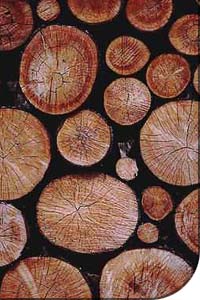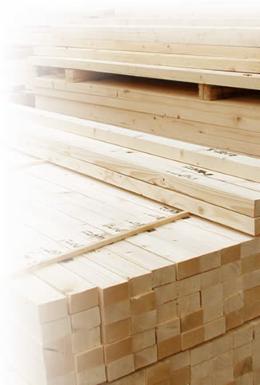Timber frame is best placed to take advantage of the current building regulations (Part L).
- Materials like timber have a lower environmental impact with a BRE green guide rating of A+ i.e Walls, roofs, windows and doors.
- Responsible sourcing of materials like timber i.e FSC & PEFC (chain of custody)
- Timber frame walls can easily achieve the current standards required in the construction of new homes. i.e good air-tightness and low U-values.
- The worlds first Code 6 (C.S.H) Zero Carbon home was timber frame.
- Timber frame advantages start with a 'fabric first approach' with the right building fabric excellent U-Values of 0.15 - 0.11 W/m2K can be achieved by using off-site constructed insulated SIP's or closed panel systems.
- The advantage with timber frame is the natural design process. This design process from Architect to timber frame designer eliminates problems which may arise on site. It is important to recognize the difficulty of achieving low air permeability on site, by focusing on getting it right first time at the planing and design stage, expensive additional remedial works can be avoided.
- The major advantage of timber frames is due to the off-site construction process. Many manufactures and fabricators will have a higher degree of quality control over traditional methods of site based construction methods. This also lends itself to more efficient erection time on site.
- Another overlooked advantage is the lower thermal mass of timber. The advantage of a efficient use of the building footprint means lighter foundations are required so reducing the amount of CO2 materials used.
- Timber frame lends itself to pre-insulated wall panels and roof cassettes, thereby reducing overall wall thickness. Improved air tightness from accurate cutting, sealing and fitting will achieve a higher thermal performance by minimizing thermal bridging.
- Larger panels have fewer junctions and joints, thereby improving the overall air tightness.
- Rubberised gaskets or seals can be pre-fitted in the factory to panels and plates. This again improves the air tightness of the building.
- Window, doors, ducting and service voids can be easily installed factory fitted within the timber frame, this limits the gaps around the frame therefore reducing cold bridging and improving the overall air tightness.
- By focusing on a simply design, repeatable details and a more energy-efficient fabric "STuDS" can help you take full advantage of the benefits of timber frame.


- Its true to say the construction industry was hoodwinked into the Zero Carbon ethos. Back before the credit crunch when the house building industry was booming, the government were promising 3 million news homes, government policy was therefore pushing up land prices. It was argued at the time the construction industry could afford to pay the extra from the increases that were generated from land values.
- Its been suggested that Zero Carbon houses will cost up to £30-50,000 more to build. So how will new houses compete on price with the existing housing stock? Would home owners be willing to pay for more energy efficient houses?
- So what if we could design and build without the need for biomass boilers, wind turbines, or solar panels? The answer this time again lies with the Germans! just like their well engineered car industry, they have done it again with a simple approach to to low-energy buildings with the Passivhaus standard. Simply put this is a process of building a super-insulated, airtight envelope to a higher standard. Passivhaus is not Zero Carbon instead energy is saved by using more energy efficient appliances and lighting. Coupled with a degree of solar gain, this then reduces the need for a heating system. So by ditching the non cost-effective renewables makes homes that much more cheaper to build, and more cost effective to run.
- Therefore the way forward at "STuDS" we believe is to have an approach to Low Carbon design rather than Zero Carbon.
- Whilst every effort has been made to ensure the accuracy of the information provided, 'STuDS' cannot accept liability for loss or damage arising from the use of the information provided.